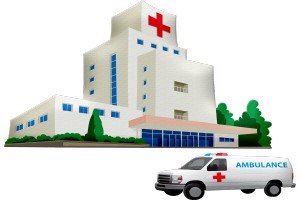
New Delhi: District hospitals are a valuable resource providing secondary level of health care, which includes comprehensive preventive, promotive and curative services. They in India have a range of 1 to 408 beds per 1 lakh population.
On an average a district hospital in India has 24 beds per 1 lakh population. The Indian Public Health Standards (IPHS) 2012 guidelines recommend district hospitals to maintain at least 22 beds per 1 lakh population (based on district population average of 2001 Census). District hospitals in India have a range of 1 to 408 beds per 1 lakh population.
Currently, there are more than 800 district hospitals across India providing crucial services to the population. 217 district hospitals were found to have at least 22 beds for every 1 lakh population.
NITI Aayog today released a performance assessment report of district hospitals in India, titled ‘Best Practices in the Performance of District Hospitals’, that found that less populated districts have been seen to fare well in infrastructure-related Key Performance Indicators (KPIs), while the more populated districts in the states of Uttar Pradesh, Maharashtra, have obtained higher scores in KPIs such as bed occupancy rates and number of surgeries per surgeon.
Overall, 75 district hospitals across 24 States and Union Territories emerged as top performers on indicators ranging from availability of beds, medical and paramedical staff, core health and diagnostic testing services to outputs such as bed occupancy rate and number of surgeries per surgeon.
The report, which can serve as a foundation for a roadmap of action for developing upgraded and improved district hospitals in the country, is an outcome of collaboration with the Ministry of Health and Family Welfare and WHO India. The National Accreditation Board for Hospitals and Healthcare Providers, a constituent board of the Quality Council of India, conducted the on-ground data validation.
NITI Aayog conducted the detailed study on the domestic and international health systems in order to determine the domains and specific indicators that are required to be included in this holistic assessment of hospitals.
This was the first-ever pan-India assessment at the district level that draws upon physical validation of the data from the Health Management Information System (HMIS) to benchmark the district hospitals on a diverse mix of input and output indicators. The assessment looked at a wide array of health indicators ranging from beds, doctors, nurses, paramedics, diagnostic and health care facilities to the rate of Caesarean section surgeries and bed occupancy, amongst others.
NITI Aayog CEO Amitabh Kant said the entire objective of the exercise is to pave the way for a more informed understanding of healthcare services available in different regions.
A total of 707 district hospitals, including medical colleges from some States, as shared by the Union Ministry of Health and Family Welfare, Government of India, across 36 States and Union Territories were part of the assessment conducted in 2018–19. For this assessment, the HMIS data of district hospitals for the financial year 2017–18 was taken as baseline, which was validated against the physical records maintained by the hospitals. The validation exercise was conducted by the National Accreditation Board for Hospitals and Healthcare Providers (NABH). It involved onsite review of medical records of all district hospitals — the registers from where data was collated and entered in the HMIS portal were reviewed for the purpose of the audit. The validation exercise revealed that on average, there was a 75% match between the data in the physical records and that entered on HMIS. The most common reasons for a mismatch between two data points included difference in the understanding of definitions of various indicators, lack of continuity in data capture and data entry in HMIS, and ambiguous indicator definition.
– global bihari bureau





